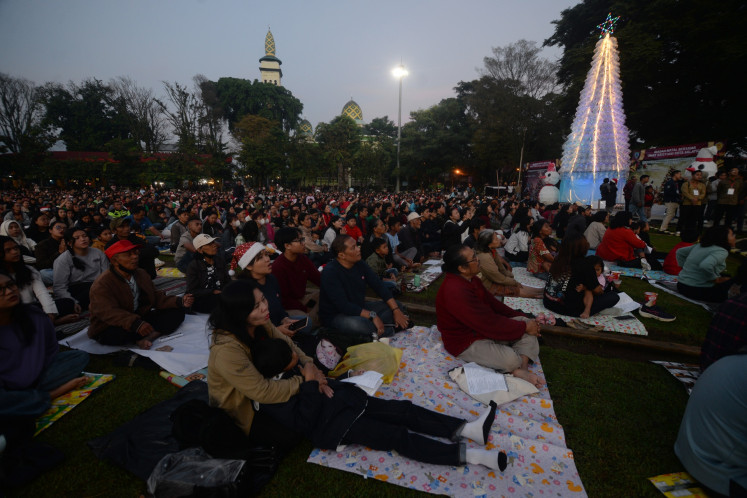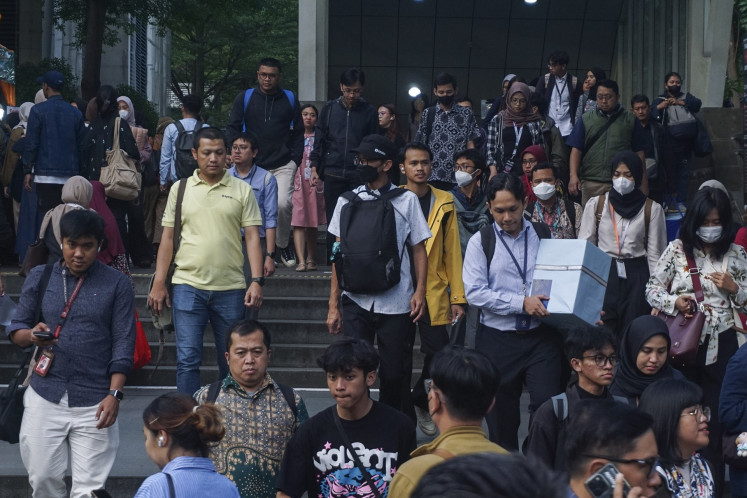Popular Reads
Top Results
Can't find what you're looking for?
View all search resultsPopular Reads
Top Results
Can't find what you're looking for?
View all search resultsGovt wants to increase population of Javan gibbon
With the Owa Jawa (Javan gibbon) classified as endangered, the government aims to increase its population by 10 percent in the next five years
Change text size
Gift Premium Articles
to Anyone
W
ith the Owa Jawa (Javan gibbon) classified as endangered, the government aims to increase its population by 10 percent in the next five years.
The Environment and Forestry Ministry said on Tuesday that the plan was stipulated in the National Mid-Term Development Plan (RPJMN).
'State-owned forestry company Perum Perhutani will cooperate with several NGOs. Soon we will release some gibbons on a mountain in Riau. It is one of our attempts to increase their population,' the director of conservation areas and forest protection at the ministry, Bambang Dahono Adji, told a press conference in Senayan, Central Jakarta.
Bambang said the situation was critical as there were only 5,310 of the primates left in the country.
Most Javan gibbons live on Mount Gede Pangrango, Mt. Halimun and in Ujung Kulon National Park.
According to Bambang, there are not many Javan gibbons left because the government failed to reach its previous target of increasing its population.
'We expected a 3 percent population increase [as targeted in 2009-2014 RPJMN], but the population increased only 2 percent because of pressure [from humans],' he said.
The Javan gibbon is among 25 prioritized animals whose populations are targeted to be increased by 10 percent in the current RPJMN.
They are categorized as endangered species by the International Union for Conservation of Nature (IUCN).
The IUCN also named 2015 the year of the gibbon. It says there is a 50 percent chance that the Javan gibbon will become extinct within the next decade.
The ministry, Perum Perhutani and the Owa Jawa Foundation plan to release two Javan gibbon couples into their natural habitat on Mt. Puntang in the Mt. Malabar conservation area, Bandung, East Java, on Friday.
The Malabar protected forest is home to 120 plant varieties favored by gibbons.
The couples are Robin (male) and Moni (female) and Moli (male) and Nancy (female). Both couples have undergone seven to 11 years of rehabilitation at the Javan Gibbon Center, which is managed by the foundation, in the Mt. Gede Pangrango National Park.
They were pets in Bogor, Depok and Banten before being rescued.
The Javan gibbon is at risk of poaching because when young, they are regarded as a cute pets.
However, to separate a young gibbon from its mother, the poacher must first kill the mother.
Owa Jawa Foundation chairwoman Noviar Andayani said people could easily buy a young gibbon both online and offline.
'That's why we want to tell people not to keep or capture Owa Jawa because by doing so, you kill the chance for them to live,' she said. 'If they are kept as pets, they live in small cages and their diet is different.'
That is why gibbons kept as pets need to be taught at rehabilitation centers how to adapt to their natural environment so that they can survive once released, said Noviar.










